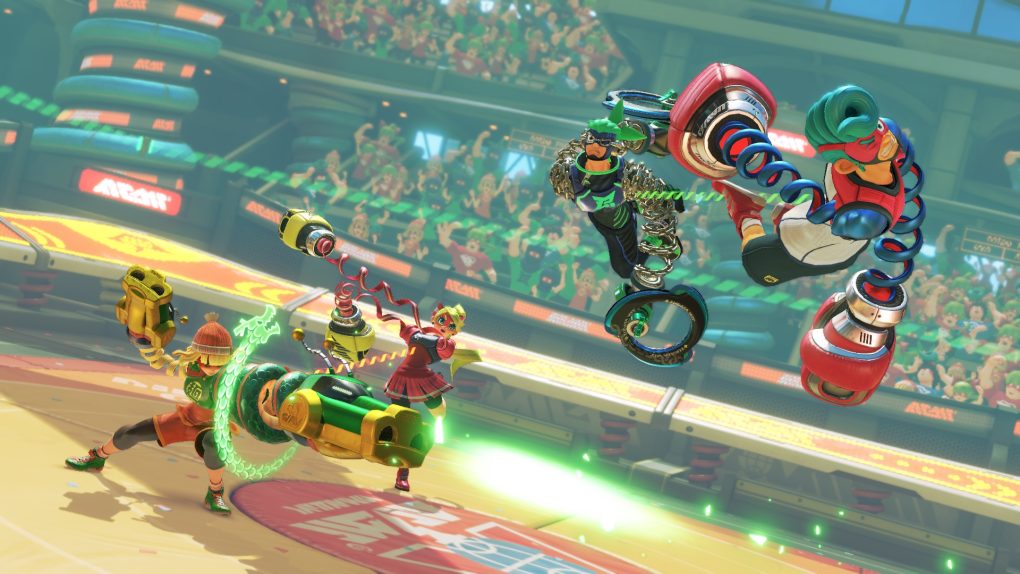My first hour or so with ARMS was underwhelming.
My expectations weren’t all that high to begin with, as I really didn’t know what to expect from a first-party fighting game on the Nintendo Switch, but the monotony and repetition of the genre rarely holds my interest anyway. I came in with an open mind though, and was disappointed to discover that ARMS just wasn’t going to be another brilliant flash in the pan like Splatoon was on the Wii U.
Then I played the game’s online Party Match mode and everything changed.
ARMS is not a traditional fighting game. The most blatant difference between ARMS and the likes of Injustice 2, Street Fighter V or Killer Instinct is that the matches take place in completely 3D arenas. Rather than being locked on a 2D plane, the fighters in ARMS have a full range of motion, which makes the matches far more dynamic (if a little less precise) than 2D fighting games.
Standard matches are between two fighters, each equipped with a set of interchangeable arms (hence the name). Some arms are light and fast; other arms are slow and heavy. Some arms can block incoming attacks; other arms serve as long-distance weapons. There is a massive variety, and players can mix and match arms as they please at the beginning of the match and between rounds in order to find the best pairing and counter their opponents. Learning which arms pair best together is half the fun.
Fighting in ARMS is relatively uncomplicated, but not without its nuances. There’s a button for your left arm, a button for your right arm, a button to dodge and a button to jump. You can grab your opponent by punching with both arms simultaneously or block to restore health and stop incoming attacks.
Like all of the best competitive games, ARMS is relatively easy to learn but hard to master. After spending a few hours battling players online during the Global Testpunch weekends, it was clear that there was a sizable gap between the players who were clicking with the controls and those who weren’t. Once you get a handle on how far to position yourself from your opponent(s) and how to effectively mix jumps, dodges, punches and throws, you can easily overmatch a newcomer.
ARMS isn’t as packed with content as a typical Nintendo game (think of the dozens of courses and characters in games like Mario Kart 8 or Super Smash Bros. for Wii U), but what’s in the package is very compelling. There’s a Grand Prix single player mode in which you pick a fighter and have to defeat ten other fighters to emerge victorious. There’s also a Versus mode where you can face off against AI or against other local players. There’s a Ranked Match mode for the competitive players and there’s a Party Match mode that throws a group of players into a lobby and grabs 2-4 of them at a time to face off in free-for-all fights, team fights, V-Ball matches and more.
For me, Party Match mode is where I turned the corner on ARMS. As soon as a battle is over, win or lose, you’re seconds away from the next match. There’s no time to stew over a blowout loss or celebrate a close win — you’re already on to the next match, and I can see how easy it would be to get lost in the mode for hours. It’s also a great way to quickly gather coins, which you can use to collect more arms for your fighters. It’s as much fun as I’ve had in online multiplayer in quite a while.
ARMS is an above-average fighting game is elevated by expressive characters and a great variety of gameplay types and modes. Although it’s a bit lean on content for a Nintendo game, and I’m not sure whether or not there’s enough depth to carry it for months to come, it’s a solid, entertaining Switch exclusive and has the potential to shine as Nintendo adds more content.
Nintendo provided BGR with a copy of ARMS on Switch for the purposes of this review.








